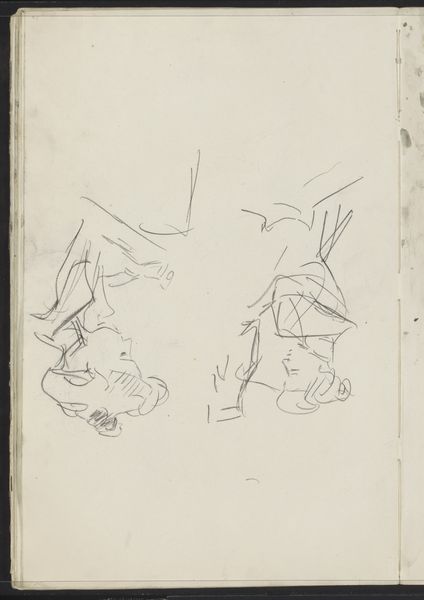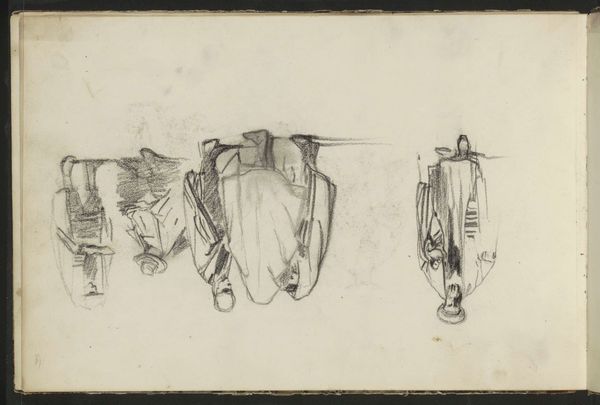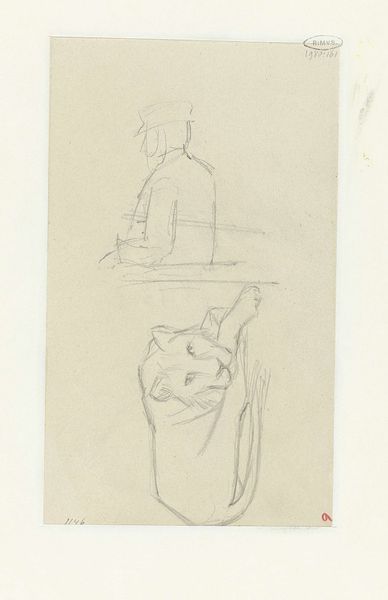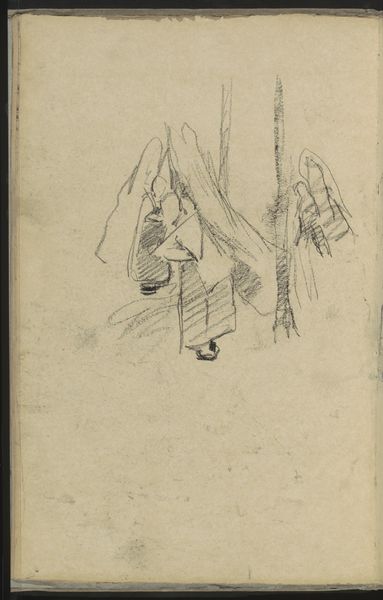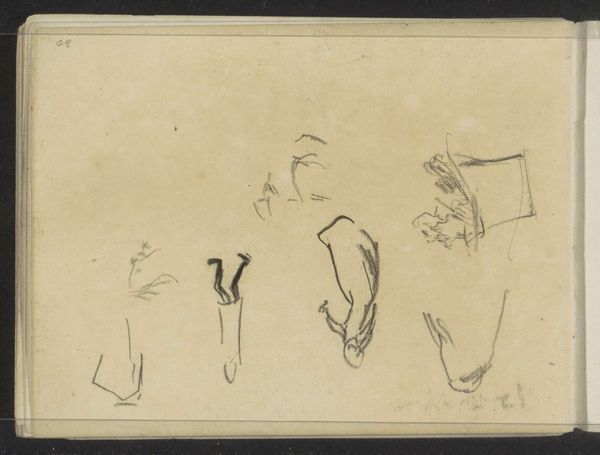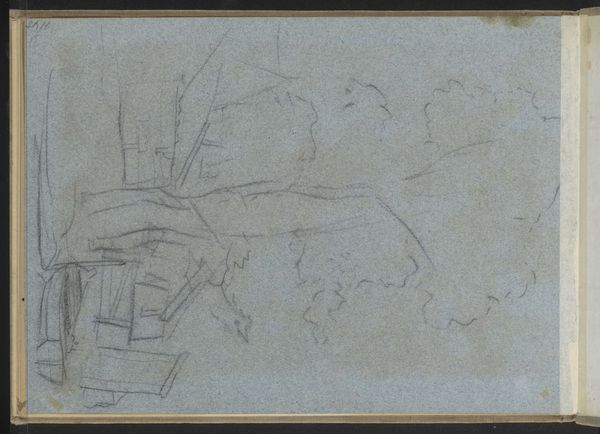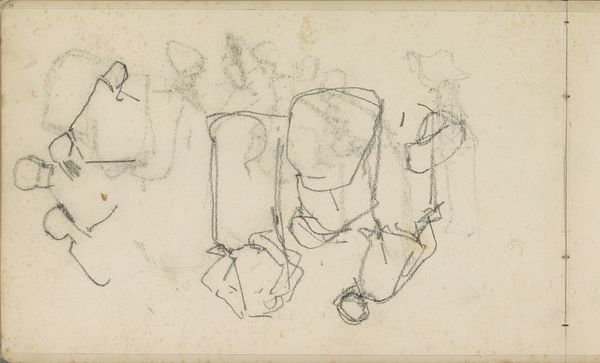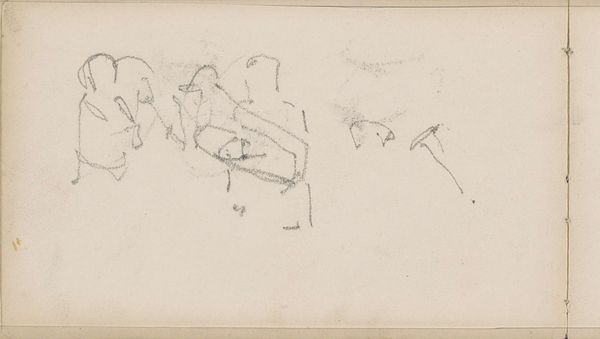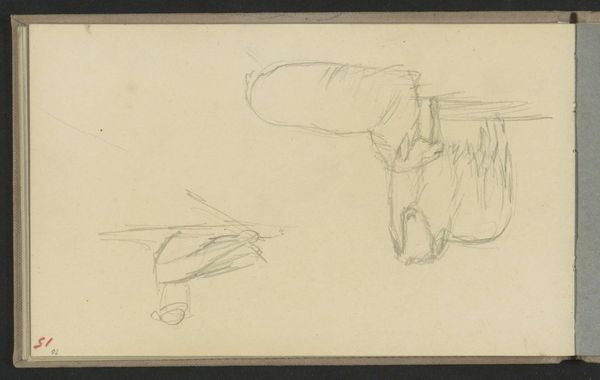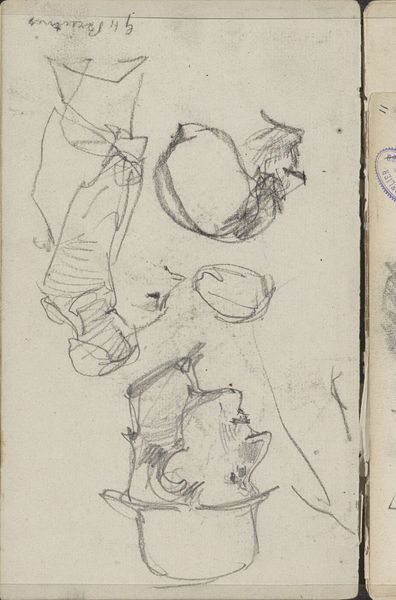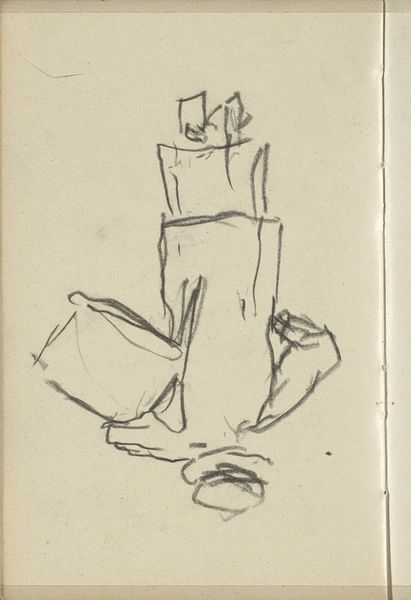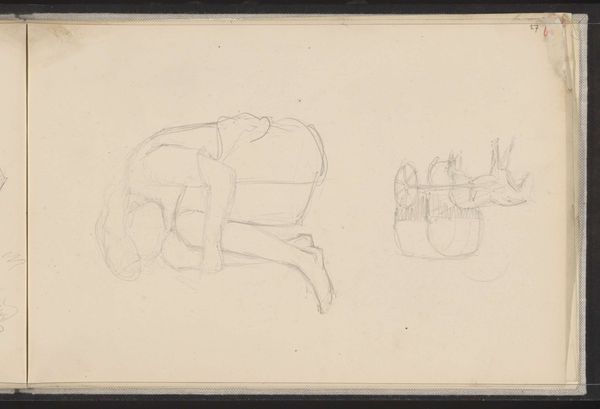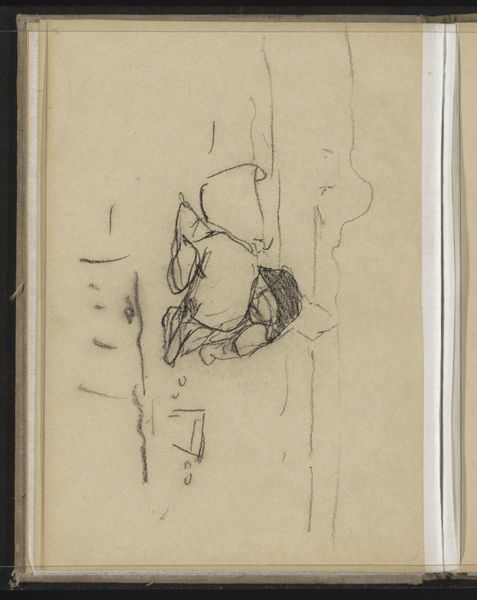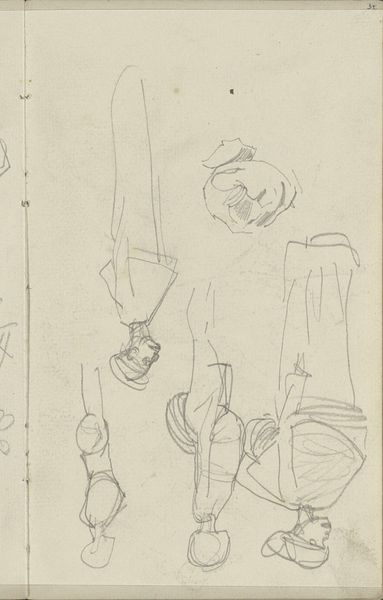
drawing, paper, pencil
#
portrait
#
drawing
#
quirky sketch
#
impressionism
#
sketch book
#
incomplete sketchy
#
figuration
#
paper
#
personal sketchbook
#
idea generation sketch
#
sketchwork
#
pencil
#
sketchbook drawing
#
storyboard and sketchbook work
#
sketchbook art
#
initial sketch
Copyright: Rijks Museum: Open Domain
Curator: Here we have "Standing Figure with a Stick and a Cloak with Hood," a pencil drawing on paper by Matthijs Maris, dating from around 1849 to 1917. It's part of the Rijksmuseum's collection. What strikes you about it? Editor: Immediately, it feels like a glimpse into the artist's process, a quick sketch with a somewhat ghostly presence. The lines are so light and suggestive; you almost feel like you're seeing a figure fading into the mist. Curator: Precisely. This kind of sketch provides valuable insight into Maris’s methods. The very fact that he chose a humble material like pencil on paper suggests a focus on accessibility and immediacy of capturing the idea. We see him grappling with form, perhaps iterating on an idea for a larger, more formal work. The visible process itself becomes part of the aesthetic. Editor: And consider the subject. While presented as a 'figure', it feels almost symbolic, deliberately blurring any clear reference. How does this kind of image function within the broader societal context of art production and consumption at that time? Was Maris engaging in any political discourse via these character portrayals, and if so how might he have disseminated such concepts? Curator: Well, given its private, sketchbook nature, it's unlikely it was directly intended for public consumption in a formal sense. It's probable it reflects more private artistic exploration. But the style - with it's atmospheric indistinctness – participates in broader artistic trends of the period, in challenging academic rigidity. Think about the role of institutions and the development of artistic identity; such work might have been showcased in studios or shared amongst like-minded circles, slowly reshaping prevailing aesthetic perceptions from the ground up. Editor: That makes sense. There is this element of experimentation – you get that "behind-the-scenes" feel of art in the making – far away from the formal Salon displays. But the choice of 'everyday' subjects, worked with those deliberate mark-making decisions opens doors for future art viewers that would have otherwise been unimaginable. Curator: Absolutely, a bridge between his creative process, artistic milieu, and then to our understanding of art historical evolutions. It demonstrates how what’s left out – the 'sketchiness' – can be as important as what's meticulously rendered. Editor: It certainly gives us a richer perspective when evaluating works that eventually reached those hallowed museum walls. Curator: Precisely. Every element adds layers to understanding not just Maris’s intentions but art's potential power.
Comments
No comments
Be the first to comment and join the conversation on the ultimate creative platform.
